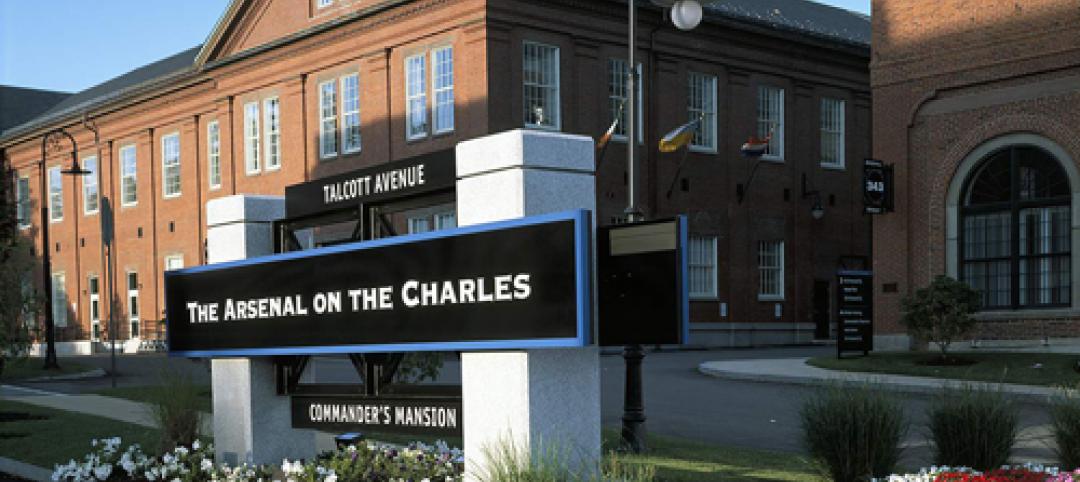TOP ARCHITECTURE FIRMS
2012 Total Revenue ($)1 Gensler $807,143,5502 Perkins+Will $360,300,0003 NBBJ $187,017,0004 Kohn Pedersen Fox Associates $153,821,1005 Perkins Eastman $145,000,0006 Callison $134,112,5657 ZGF Architects $107,412,2748 Corgan $85,377,0409 Populous $84,000,00010 HMC Architects $77,986,678
TOP ARCHITECTURE/ENGINEERING FIRMS
2012 Total Revenue ($)1 Stantec $467,254,4212 HOK $406,780,0003 HDR Architecture $325,900,0004 Skidmore, Owings & Merrill $281,686,0005 IBI Group $252,552,3436 HKS $240,300,0007 RTKL Associates $202,823,0008 Cannon Design $202,000,0009 SmithGroupJJR $166,600,00010 DLR Group $116,400,000
Giants 300 coverage of Architecture Firms brought to you by Sage www.sageglass.com
Read BD+C's full Giants 300 Report
Related Stories
| Sep 4, 2013
Augmented reality goes mainstream: 12 applications for design and construction firms
Thanks to inexpensive mobile devices and increasingly advanced software apps, Building Teams are finally able to bring their BIM models to life on the job site.
| Sep 4, 2013
K-12 school design that pays off for students
More and more educators are being influenced by the Reggio Emilia approach to pedagogy, with its mantra of “environment as the third teacher”—an approach that gives Building Teams a responsibility to pay even closer attention to the special needs of today’s schools.
| Sep 4, 2013
Video: Autodesk Fellow Tom Wujec on why you should join the Vision U40 competition
Tom Wujec, lead facilitator of BD+C's 3rd Annual Under 40 Leadership Summit, October 9-11 in San Francisco, explains the Vision U40 competition, which will launch at the event. U40 Summit participants will collaborate in small teams to develop innovative solutions to today's pressing social, economic, technical and cultural problems related to the built environment. They will complete for $5,000 in prizes.
| Sep 4, 2013
Smart building technology: Talking results at the BUILDINGChicago/ Greening the Heartland show
Recent advancements in technology are allowing owners to connect with facilities as never before, leveraging existing automation systems to achieve cost-effective energy improvements. This BUILDINGChicago presentation will feature Procter & Gamble’s smart building management program.
| Sep 4, 2013
Twenty-nine-acre brick building complex in Watertown, Mass., to be renovated as innovation hub
The owner of a 29-acre cluster of brick buildings in Watertown, Mass., wants to reinvent the site as a 21st-century innovation hub.
| Sep 4, 2013
Last chance to pre-register for BUILDINGChicago/Greening the Heartland Conference at 20% savings
Attendees of the BUILDINGChicago/Greening the Heartland Expo and Conference can still save 20% off the at-site registration fee by registering online in these final days before the event opens on September 9 and concludes on September 11.
| Sep 3, 2013
'School in a box' project will place school in San Diego public library
Thinking outside the box, LPA Inc. is designing a school inside a box. With an emphasis on three E’s—Engage, Educate, and Empower—e3 Civic High is now being constructed on the sixth and seventh floors of a public library in downtown San Diego. Library patrons will be able to see into the school via glass elevators, but will not have physical access to the school.
| Sep 3, 2013
Delinquency rate for commercial real estate loans at lowest level in three years
The delinquency rate for US commercial real estate loans in CMBS dropped for the third straight month to 8.38%. This represents a 10-basis-point drop since July's reading and a 175-basis-point improvement from a year ago.
| Sep 3, 2013
Grand Junction, Colo., courthouse aims to be first net-zero building on National Register of Historic Places
After a two year renovation, the 95-year oldWayne S. Aspinall Federal Building and Courthouse in Grand Junction, Colo., is being evaluated for LEED Platinum status and may become the National Register of Historic Places’ first net-zero-energy building.
| Sep 3, 2013
Jon Pettit (1952-2013) - DLR Group Managing Principal
Jonathan (Jon) E. Pettit, AIA, died August 19, 2013 in Seattle following treatment for cancer. He was 61. Pettit was a DLR Group managing principal and practiced for his entire professional career with DLR Group.

















